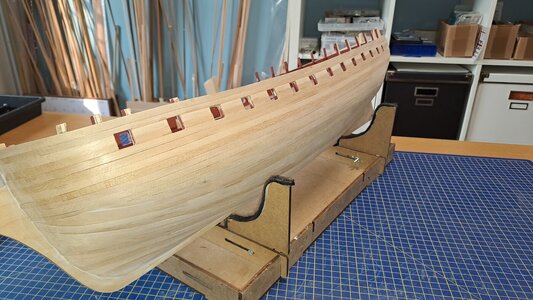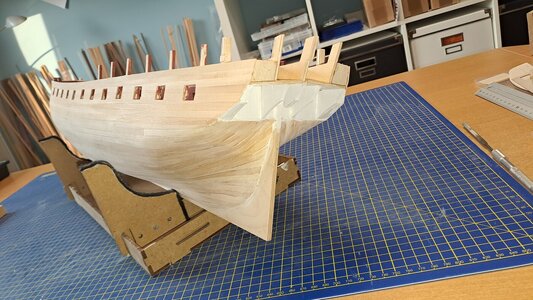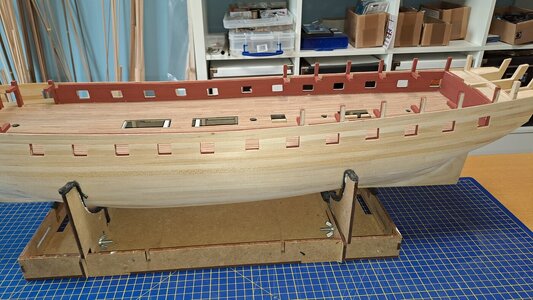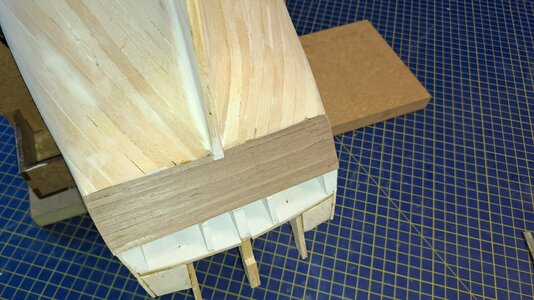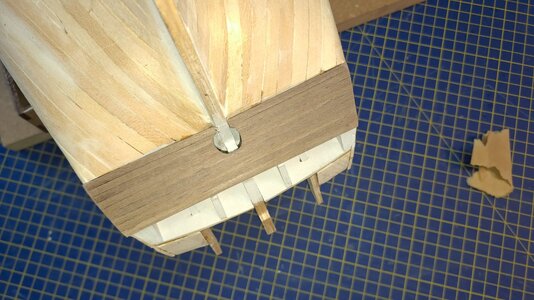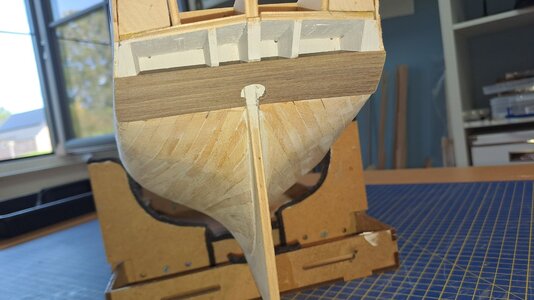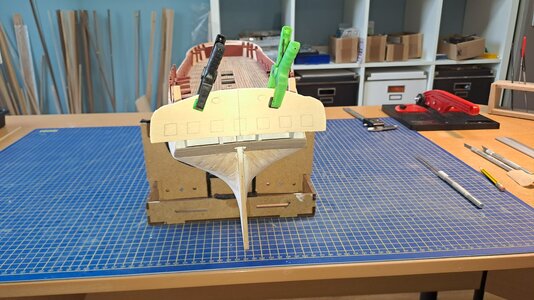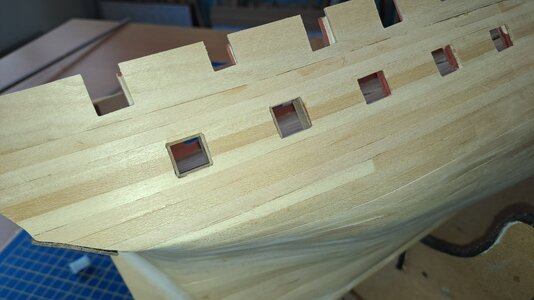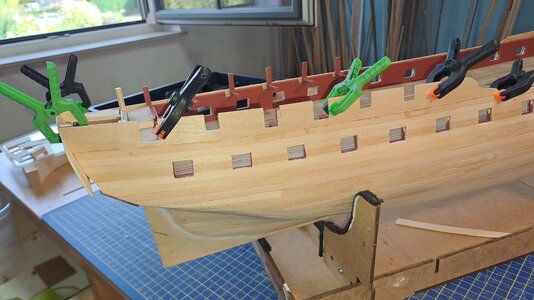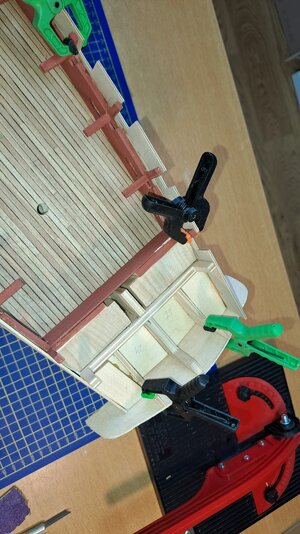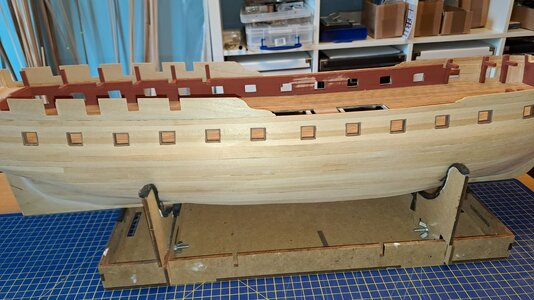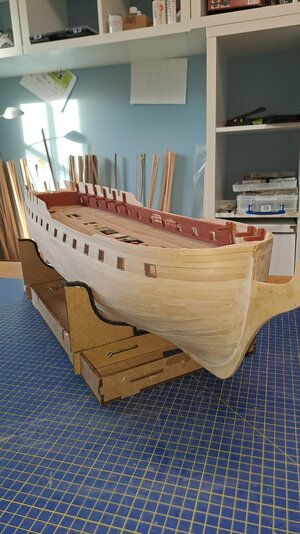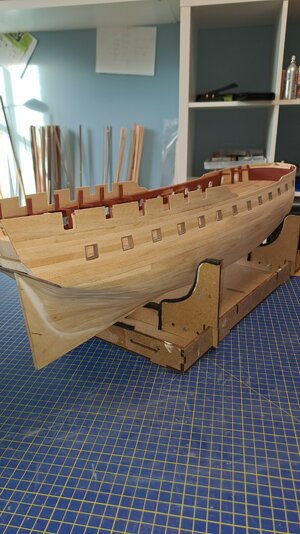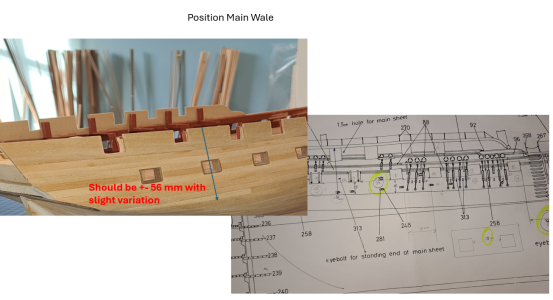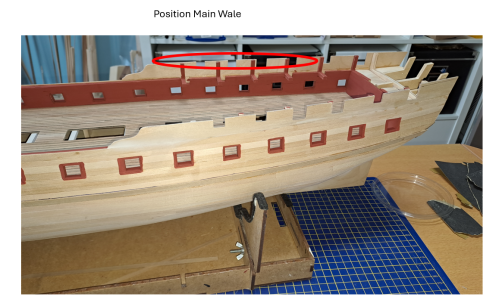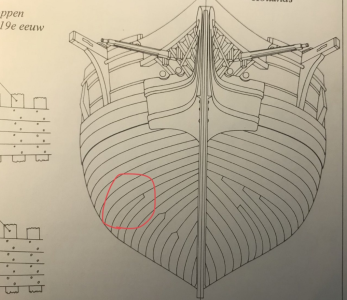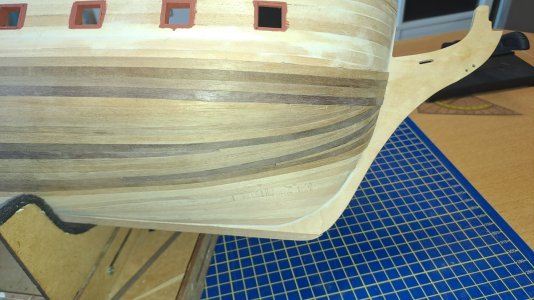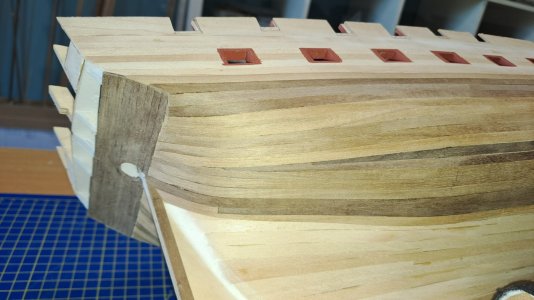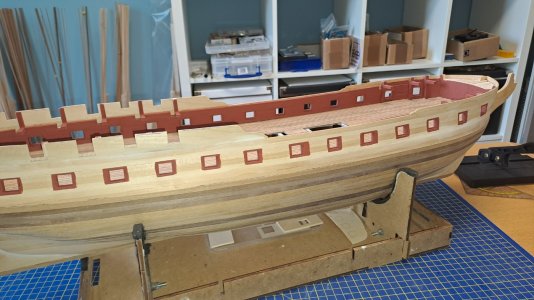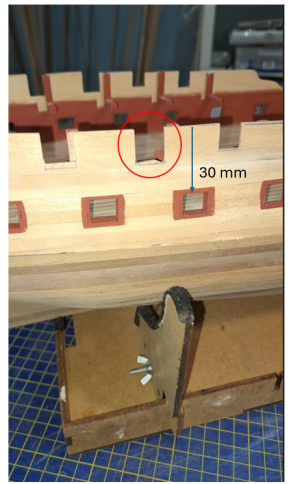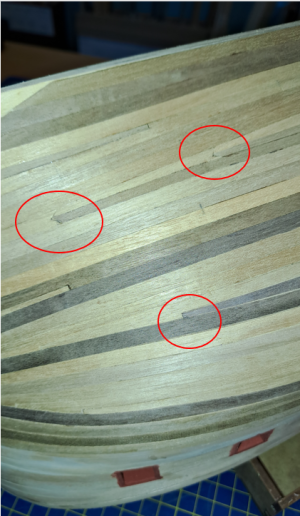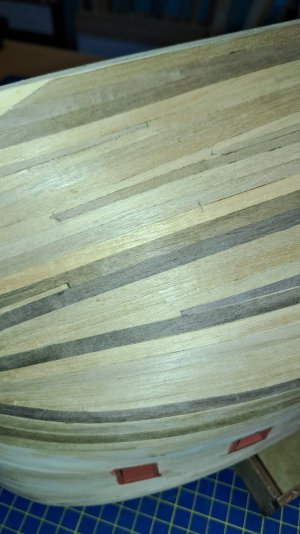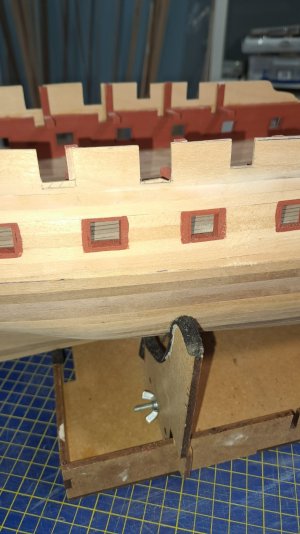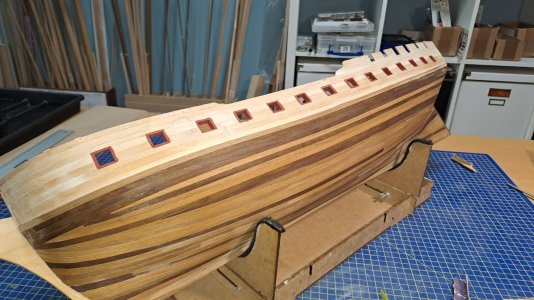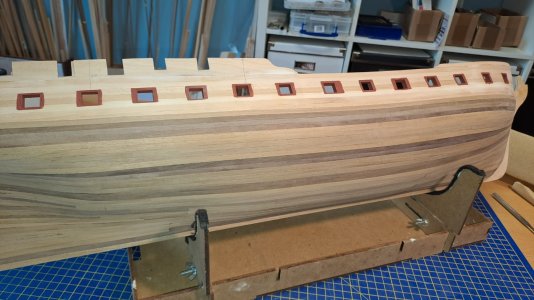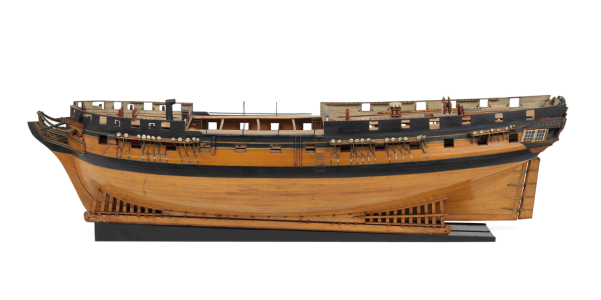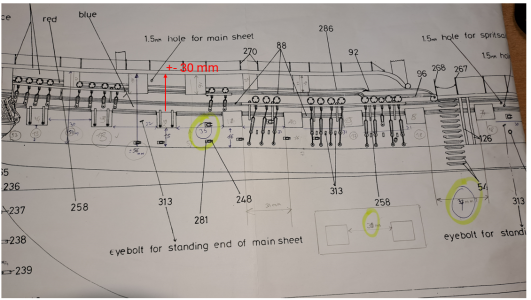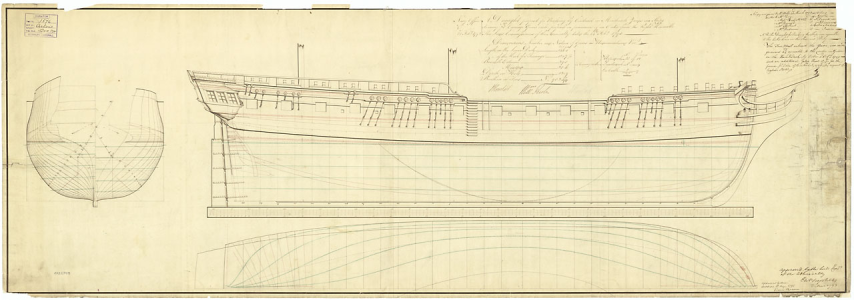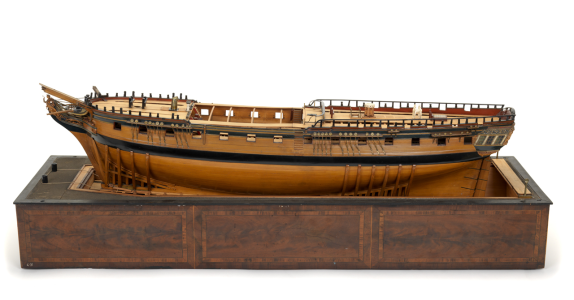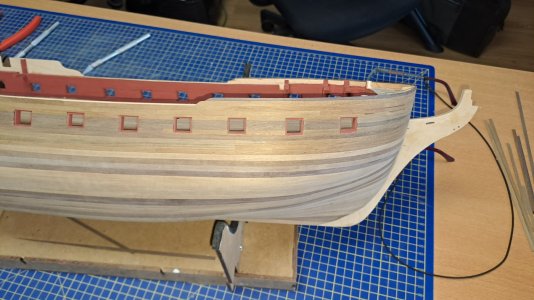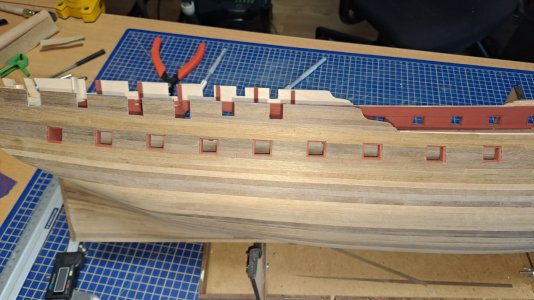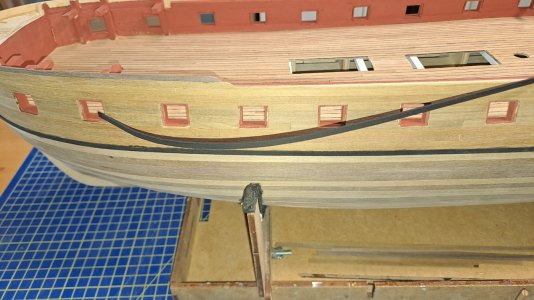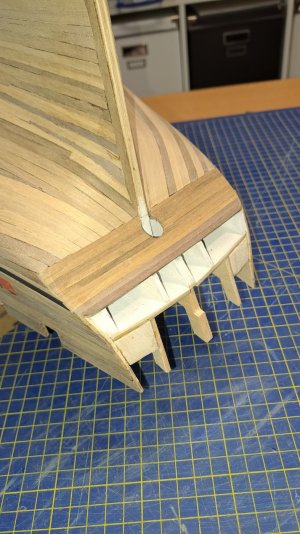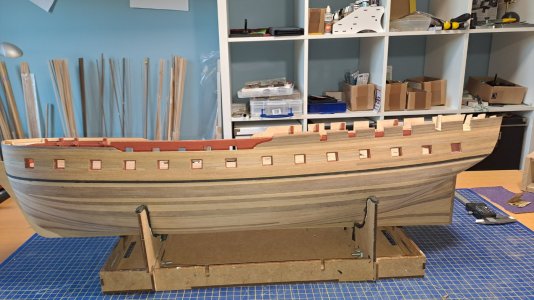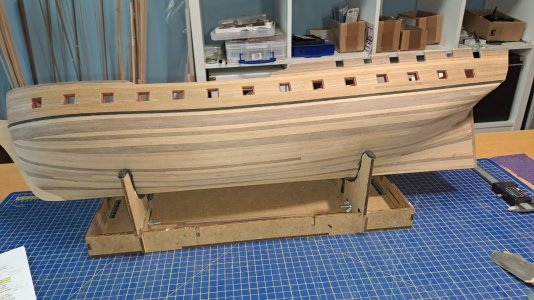Dear Allan,This makes no sense to me either. This following may have nothing to do with their instructions, but just a thought..... The quarter deck bulwark planking is attached to the top timbers which these bulkhead extensions seem to replicate. Why take them off? Then again there may be a good reason. For Diana (38) 1794 these top timbers should be moulded about 5" (in and out thickness) in the range of the quarterdeck (Scantlings of Royal Navy Ships pages 90-91) so maybe you can just sand them down to 2mm (at 1:64) if they are too thick now. The thickness of the spirketting is 3" thick and the quickwork between the spirketting and rail is 2" thick (Scantlings of Royal Navy Ships pages 200-201). The upper works outboard planking (including both layers for a double planked model) for a fifth rate was the depth of the keel divided by 9 (The Construction and Fitting of English Ships of War). In the case of Diana this is 18"/9 = 2 inches (less than 1mm for both outboard planking layers total.) I checked a couple original contracts for fifth rates contemporary to Diana and they give very similar scantlings.
In the end this might be why they recommend removing the bulkhead extensions. To leave them as is, will the total thickness with the planking they supply be too thick? The total thickness with inboard and outboard planking needs to be 9.5" (about 3.75mm) otherwise the sheer rail will be extraordinarily wide.
Allan
Thx for your feedback: I fully agree with you.
I have no choice but to saw off the Bulkheads...
The Kit includes Quarter deck bulwarks : 1,5 mm and with additional planking (eg inside = 1,5 mm + outside 1 mm Wallnut = already 2,5 mm + 1,5 mm =3,5 mm...
Thx
Marc



